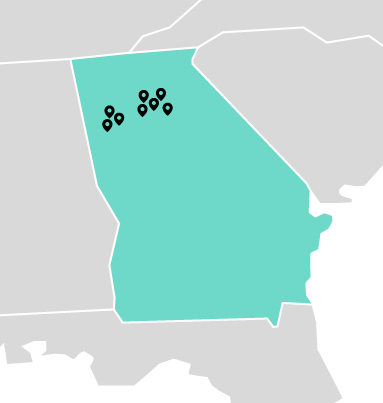Yes, deer are lovely to look at. But the damage they can do to ornamental trees, shrubs, and other plants is not. Though there’s no sure-fire way to completely deer-proof your yard, there are several measures you can take to deter them, and the bigger your bag of tricks the better. Here are a few of the many popular approaches to keeping Bambi at bay.
Wrap Young Trees During Fall. Autumn is mating, or rutting, season, and part of a buck’s ritual is to rub his antlers on trees. Young trees, especially those whose trunks are 3 inches or less in diameter, are especially vulnerable to serious damage. Your local nursery or garden supply likely carries tree wraps that are designed to protect against damage from rutting.
Choose Plants Wisely. Can’t wait for your tulips to blossom in the spring? Neither can deer, especially growing fawns and their mothers. However, daffodils, another iconic spring flower, are not a favorite menu item for most deer. The University of Georgia Extension offers a list of plants that deer tend to snack on and plants they tend to avoid. The list can be used as a guide in selecting deer-resistant plants and also in knowing which plants require protection.
Plant Strategically. If you simply
can’t do without the plants that deer seem to love, like tulips, English ivy,
and flowering dogwood, to name a few, your best bet is to plant them near the
house. Deer are reluctant to get too close to humans, so this will give
deer-attracting plants a modest amount of protection. You can bump up that
protection by including deer-resistant plants in the mix to make this area of
your yard even less inviting.
Create Barriers. Steep slopes and
terraced gardens not only add interest to a landscape, they also deter deer.
While they are excellent jumpers, deer are not too keen on climbing and will
likely pass up steep or terraced terrain for lower, more level ground. If a
fence is your barrier of choice, keep in mind that it needs to completely block
the deer’s view of what lies on the other side to be at all effective. Deer
will not leap over a barrier if they can’t see their landing pad.
Use the Fear Factor. Deer are scared
off by sudden or unpredictable movement. A sculpture that moves in the wind, a
decorative windmill, even wind catchers and flags in the garden or near
vulnerable plants can all do their part in discouraging deer from dining on
your plants.
Remove Temptation. Those berries and
veggies you forgot to pick? They might not be appealing to you anymore, but
they are to deer. You can minimize damage to vegetable
gardens by harvesting crops as soon as they’re ready and removing any
unwanted fruits and vegetables immediately.
With this list of deer-deterrent tricks, your lawn should stay as protected as possible all year long.









